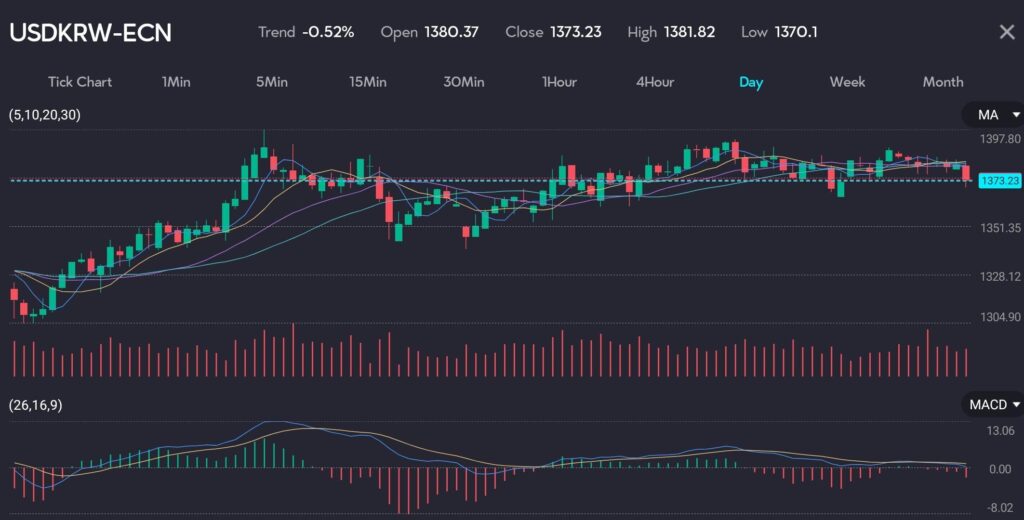Key points
- South Korean won and Thai baht lead gains among Asian currencies.
- Traders are closely watching the Fed’s policy decision, with an 87% probability of a September rate cut.
- The Bank of Japan raises rates, causing initial yen appreciation followed by a pullback.
Emerging Asian currencies and stocks experienced gains on Wednesday as traders awaited the US Federal Reserve’s policy decision. The South Korean won and the Thai baht led the way among currencies, rising by 0.6% and 0.5%, respectively.

SEE: The USDKRW closing lower, implying a stronger KRW on the VT Markets App
The Bank of Japan raised its short-term interest rate target to 0.25% and detailed a quantitative tightening plan. This initially pushed the yen to its highest level in a week, but the currency later pared all gains.
Other Asian currencies such as the Singapore dollar, Philippine peso, and Malaysian ringgit traded flat to 0.3% higher.
Tension is in the air
While the anticipation is palpable, traders continue patiently awaiting the Fed’s decision, with market expectations leaning towards the central bank maintaining current interest rates.
However, any hints at a potential rate cut in September are highly anticipated. As of time of writing, there is more than a 87% chance of a 25 basis-point reduction.
A potential Fed rate cut could influence Asian central banks to ease their policies. While this may not be universally beneficial for emerging Asian economies, it might lead to a risk-on sentiment for Asian currencies.
A wider interest rate differential typically attracts traders seeking higher returns, leading to boosted capital inflows into riskier emerging market assets.
Beyond the Fed decision
While the US remains the centre of attention, traders are also awaiting inflation data from Indonesia and South Korea this week. This data is vital to understand the future stance of their respective central banks on interest rates. Both central banks held rates earlier in the month, indicating the need for more economic evidence before making any policy shifts.
You might be interested: Asian currencies face challenges as markets react to Trump attack fallout
Most emerging Asian equities rose, buoyed by positive sentiment. Chinese stocks advanced by about 1.9%, driven by investor optimism following a Politburo meeting that revolved around boosting consumption, raise incomes, and simulate private investment.
Other markets in Thailand, the Philippines, Malaysia, and Indonesia also saw gains, with increases ranging between 0.1% and 0.8%.
Given the current market dynamics, the outlook for emerging Asian currencies and equities appears optimistic. Traders should remain cautious, however, the Fed rate decision and upcoming inflation data will play a key role in shaping market sentiment and movement in the near term.







